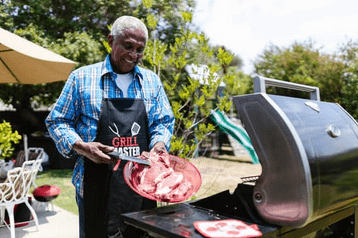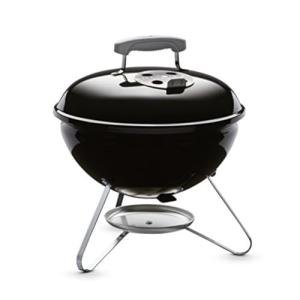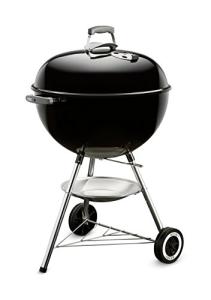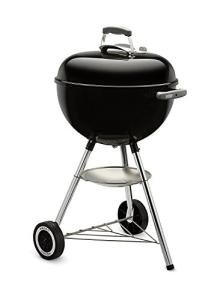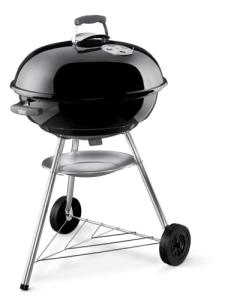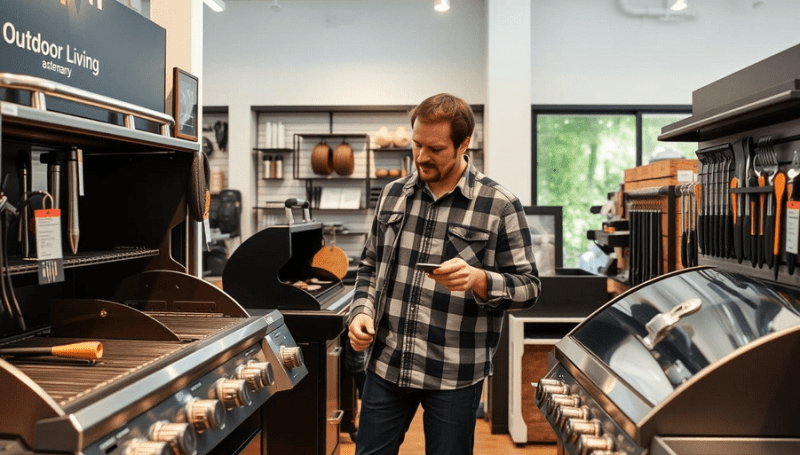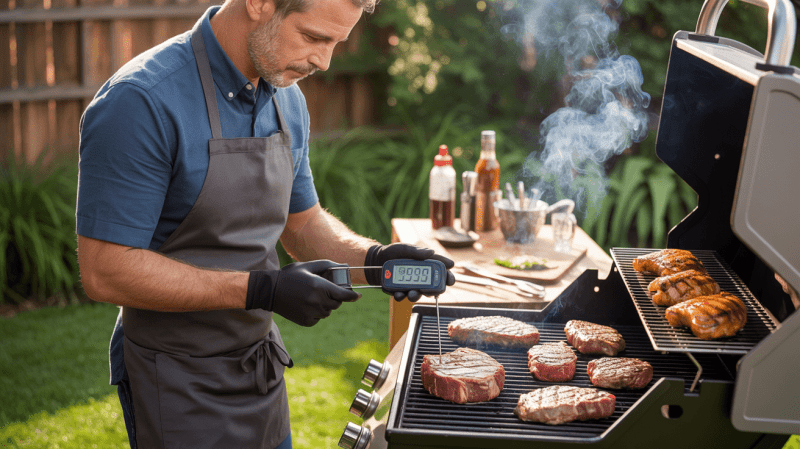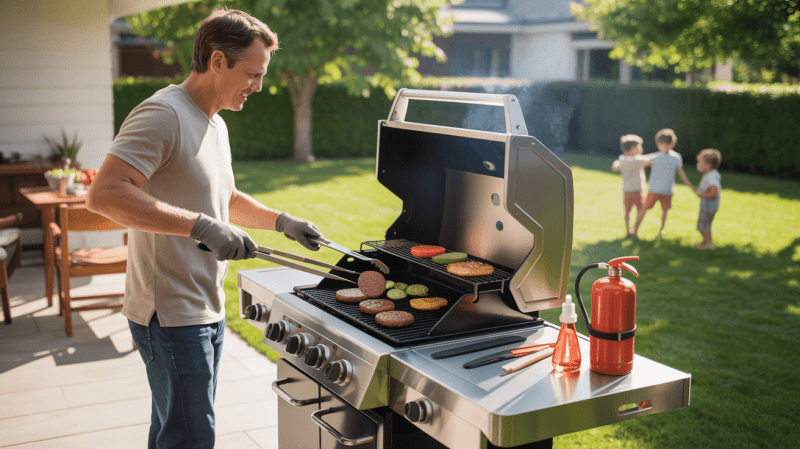Tips on Indirect Grilling:
Learning how to set up a charcoal grill for indirect grilling can change your outdoor cooking. I've spent years perfecting this technique. Now, I'm excited to share my knowledge on managing heat and controlling temperature to improve your barbecue skills.
Indirect grilling is great for cooking big cuts of meat and delicate foods. It uses gentle, even heat. You'll open up a world of new culinary possibilities by learning how to set up your charcoal grill for indirect grilling.

This guide will teach you about creating the right heat zones and managing temperature. You'll learn how to get delicious results every time you use your charcoal grill.
Key Takeaways
- Learn the fundamental techniques of indirect grilling
- Understand how to create optimal heat zones on your charcoal grill
- Master temperature control for various types of food
- Discover the secrets to perfectly cooked meats and vegetables
- Improve your overall outdoor cooking skills
Understanding Indirect Heat Grilling Basics
https://www.youtube.com/watch?v=_jUm0svLuWQ
Mastering charcoal grilling means learning different techniques. Indirect heat grilling changes how you cook outdoors. It creates hot and cool zones for better control and variety in cooking.
Defining Indirect Grilling
Indirect grilling involves placing food away from the heat source. You set up two zones: a hot area with burning charcoal and a cooler one without flame. This method helps control temperatures and prevent burning.
Key Benefits of Indirect Grilling
- Prevents flare-ups and excessive charring
- Allows for even cooking of larger cuts of meat
- Enables low and slow cooking techniques
- Reduces risk of burning delicate foods
Essential Grilling Equipment
To excel in indirect grilling, you need the right tools:
- Charcoal grill with adjustable vents
- Reliable meat thermometer
- Heat-resistant gloves
- Long-handled tongs
- Charcoal chimney starter
"Indirect grilling is not just a cooking method, it's a culinary art that transforms average backyard barbecues into gourmet experiences." - Grilling Experts
Learning these basics will improve your grilling skills. You'll make delicious dishes with confidence and precision.
How to Set Up a Charcoal Grill for Indirect Grilling
Mastering indirect grilling makes your backyard BBQ amazing. Setting up your charcoal grill right is key for great results. I'll show you how to ensure your food is safe and tastes amazing.

Preparing Your Charcoal Chimney
Your charcoal chimney is vital for even heat. Here's how to do it right:
- Choose a good chimney starter
- Put a newspaper or a fire starter at the bottom
- Fill it with the right amount of charcoal
- Light it and wait 15-20 minutes
Proper Coal Arrangement Techniques
Setting up heat zones is all about where you put the coal. The two-zone method helps control airflow:
| Technique | Heat Zone | Cooking Purpose |
|---|---|---|
| Banked Coals | Direct/Indirect | Searing and slow cooking |
| Ring Method | Circular Indirect | Even heat distribution |
Setting Up Heat Zones
The drip pan's location is key for indirect grilling. Place it between the coals to catch drippings and avoid flare-ups. This keeps your food safe and cooks it just right.
Learning these indirect grilling tips will make your BBQs better. You'll cook delicious meals every time.
Different Charcoal Configuration Methods
Learning different barbecue grilling methods can change how you cook outdoors. I'll show you three key ways to arrange coal for indirect heat. These techniques will improve your grilling.

The two-zone grilling method is a big improvement for heat control. Here's how to set it up:
- Pile lit charcoal on one side of the grill
- Leave the opposite side empty for indirect cooking
- Perfect for cooking different foods at the same time
For low and slow smoking, try the snake method. It makes a long-burning coal setup great for long cooking times:
- Create a semicircle of unlit charcoal around the grill's perimeter
- Light a small portion of coals
- Place lit coals at one end of the unlit charcoal chain
The parallel with a pan method is also smart for indirect heat. Place a drip pan in the center and put coals on both sides. This setup is perfect for roasting big cuts of meat.
Pro tip: Try these setups to find your favorite grilling way!
Each method has its benefits for different cooking styles. Knowing these coal arrangement techniques will make you a grill master. You'll be able to cook delicious meals with just the right temperature.
Temperature Control and Airflow Management
Mastering temperature control is key for slow-cooking with a charcoal grill. It's all about airflow management and how air dampers affect your cooking.
Air dampers, or vents, are vital for precise temperature control. Most charcoal grills have two vents: one at the bottom (intake) and another on the lid (exhaust). These vents control oxygen flow, which affects your grill's heat.
Temperature Control Strategies
- Adjust the bottom intake damper to control the primary oxygen supply
- Use the lid damper to fine-tune heat levels
- Implement two-zone grilling for versatile cooking
The indirect grilling method offers great temperature precision. It creates separate heat zones for accurate cooking temperatures.
| Damper Position | Temperature Range | Cooking Style |
|---|---|---|
| Fully Open | 450-550°F | High Heat Searing |
| Half Open | 350-450°F | Medium Direct Grilling |
| Quarter Open | 250-350°F | Low Indirect Cooking |
Pro tip: Open bottom dampers and use the lid damper for precise temperature adjustments. Regular grill cleaning ensures optimal airflow and consistent performance.
With practice, you'll get better at controlling your charcoal grill's temperature. This will turn your outdoor cooking into a true culinary art.
Conclusion
Indirect grilling is not just a cooking method; it's an art. Learning to arrange charcoal and manage heat zones takes time and patience. It's all about mastering your cooking space.
Heat deflector plates are essential for indirect grilling. They ensure even heat, which is perfect for cooking sensitive foods. Start with simple dishes and gradually improve your placement and management of airflow.
Every grilling enthusiast begins with curiosity and a desire to learn. By honing these skills, you'll open up a world of flavors. You'll master cooking whole chickens, roasts, and veggies. Remember, it's not just about precision but also enjoying the journey.
Your grill is more than a tool; it's a way to create unforgettable meals. Keep practicing, stay curious, and trust your growing abilities. Becoming a great griller is as rewarding as the delicious food you'll make.
FAQ
What is the difference between direct and indirect grilling?
Direct grilling cooks food right over the heat. Indirect grilling cooks food away from the heat, for even cooking. It's great for big cuts of meat and foods that need to cook longer without burning.
What equipment do I need for indirect grilling?
You'll need a charcoal chimney starter, heat-resistant gloves, and a meat thermometer. Tongs, a drip pan, and a grill with vents are also key. Heat deflector plates and a grill thermometer help too.
How do I set up a two-zone fire for indirect grilling?
Light charcoal on one side of the grill leaves the other empty. This makes a hot zone for searing and a cool zone for slow cooking. Place a drip pan on the cool side to catch drippings and control temperature.
How can I control the temperature when indirect grilling?
Adjust the grill's air vents to control temperature. Use the right amount of charcoal and manage airflow with top and bottom vents. Start with 50% open vents and adjust as needed.
What types of food are best for indirect grilling?
Use indirect grilling for big, tough meats like whole chickens and roasts. It's also good for delicate foods like fish and veggies. These foods cook slowly and evenly without burning.
How long can I maintain indirect heat on a charcoal grill?
With the right setup, indirect heat can last 4-6 hours. To keep the temperature steady for longer periods, add fresh coals.
What is the snake method of charcoal arrangement?
The snake method arranges unlit charcoal in a semicircle around the grill. Light coals slowly through the line for low, even heat. It's perfect for long, slow smoking sessions up to 14 hours.
How do I prevent flare-ups during indirect grilling?
Use a drip pan, trim fat from meats, and keep the grill clean to avoid flare-ups. Also, make sure the coal is arranged correctly and water is ready to control the flames.
Can I use wood chips for additional flavor during indirect grilling?
Yes! Add wood chips to the hot coals for smoky flavor. Soak them in water for 30 minutes to prevent burning. Different woods like hickory or apple can add unique tastes.
What internal temperature should I aim for when indirect grilling meats?
Temperatures vary by meat. For poultry, aim for 165°F (74°C). Beef can be from 135°F (57°C) for medium-rare to 160°F (71°C) for medium. Always use a meat thermometer for safety and doneness.
DISCLAIMER
This document is provided for general information purposes only and should not be relied upon as providing legal advice, technical, or specific operational guidance to the reader, whether as to the practices described in the document or the applicable legal requirements and regulations. Backyard Grilling Pros expressly disclaims any responsibility for liability arising from or related to the use or misuse of any information in this document.
